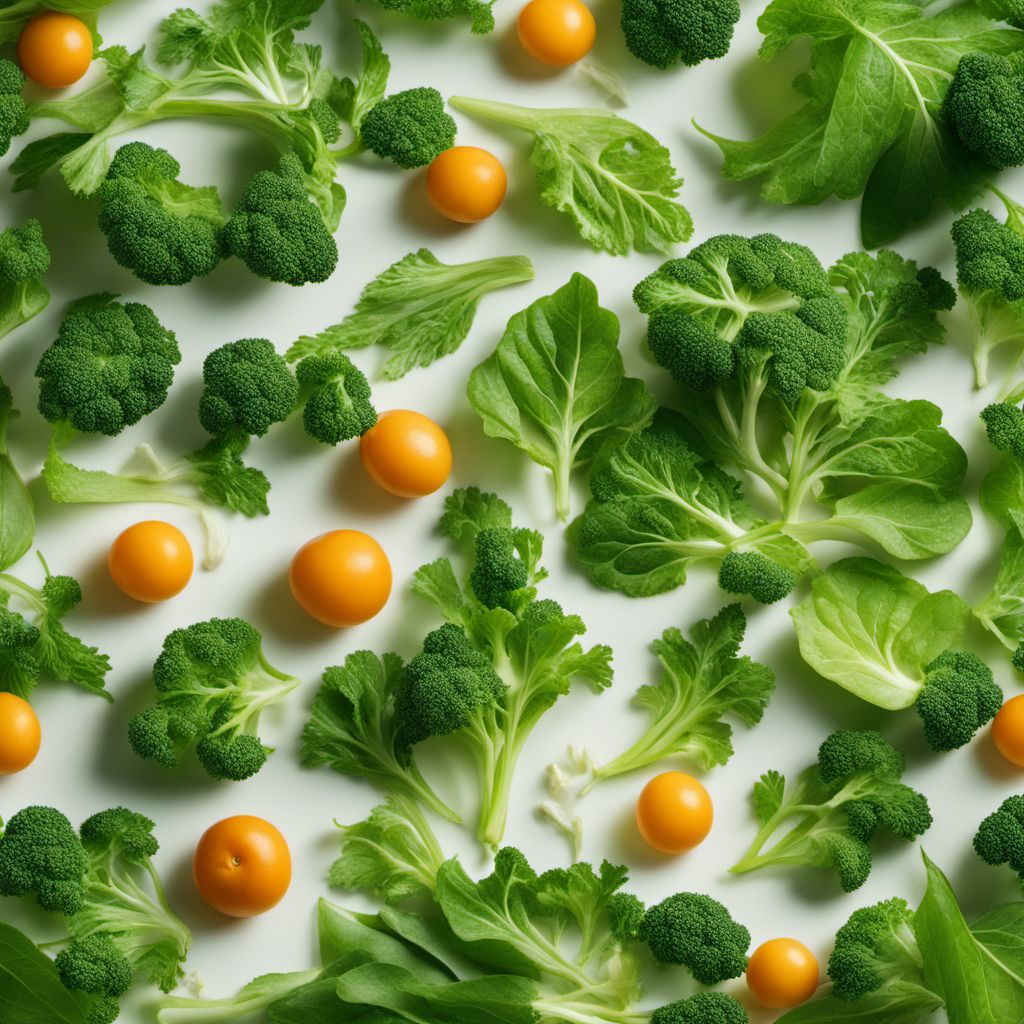
Ingredient
Leafy vegetables
The Verdant Bounty: Exploring the World of Leafy Vegetables
Leafy vegetables encompass a wide range of greens, including spinach, kale, lettuce, and arugula. These vegetables are known for their tender leaves, crisp textures, and refreshing flavors. They come in various shapes, sizes, and colors, offering a versatile canvas for culinary creativity. Leafy vegetables are packed with essential vitamins, minerals, and dietary fiber, making them a nutritious addition to any diet.
Origins and history
Leafy vegetables have been cultivated and consumed for centuries, with their origins dating back to ancient civilizations. Ancient Egyptians grew lettuce, while Romans and Greeks enjoyed various leafy greens. These vegetables have played a significant role in culinary traditions worldwide, from the use of spinach in Indian cuisine to the prominence of kale in European dishes. Today, leafy vegetables are cultivated globally and are an integral part of numerous cultural and regional cuisines.
Nutritional information
Leafy vegetables are low in calories and rich in essential nutrients. They are excellent sources of vitamins A, C, and K, as well as folate, iron, and calcium. Additionally, they are high in dietary fiber, which aids in digestion and promotes satiety. Incorporating leafy vegetables into your diet can contribute to overall health and well-being.
Allergens
Leafy vegetables are generally safe for consumption, but individuals with specific allergies or sensitivities should be cautious. Some people may be allergic to certain types of leafy greens, such as spinach or arugula. If you experience any adverse reactions after consuming leafy vegetables, consult a healthcare professional.
How to select
When selecting leafy vegetables, look for vibrant and crisp leaves. Avoid any greens that appear wilted, discolored, or have signs of decay. Opt for organically grown varieties whenever possible to minimize exposure to pesticides. Additionally, choose bunches or bags of leafy vegetables that are free from moisture or excessive condensation, as this can lead to spoilage.
Storage recommendations
To maintain the freshness and quality of leafy vegetables, it is best to store them properly. Remove any rubber bands or ties and gently wash the leaves to remove dirt or debris. Pat them dry with a clean towel or use a salad spinner. Store the leaves in a perforated plastic bag or an airtight container lined with paper towels to absorb excess moisture. Place the container in the refrigerator's crisper drawer, where the temperature and humidity are optimal for leafy vegetables. Use them within a few days for the best flavor and texture.
How to produce
Leafy vegetables can be easily grown in home gardens or small-scale farms. They thrive in well-drained soil and require adequate sunlight and water. Start by sowing seeds or transplanting seedlings into prepared soil, ensuring proper spacing between plants. Regularly water and fertilize the plants to promote healthy growth. Harvest the leaves when they reach the desired size, and enjoy the freshness of homegrown leafy vegetables.
Preparation tips
Leafy vegetables can be enjoyed in various ways, depending on personal preference and culinary creativity. They can be used as a base for salads, added to sandwiches or wraps, sautéed with garlic and olive oil, or incorporated into soups, stews, and stir-fries. Experiment with different cooking techniques, such as blanching, steaming, or braising, to enhance their flavors and textures. Remember to remove any tough stems or ribs before cooking or consuming. Additionally, consider mixing different types of leafy vegetables to create a vibrant and nutritious dish.
Culinary uses
Leafy vegetables are incredibly versatile and widely used in culinary applications worldwide. They are commonly found in salads, sandwiches, smoothies, and wraps. Spinach is a popular choice for salads and sautés, while kale is often used in smoothies and as a nutritious addition to soups and stews. Lettuce is a staple in sandwiches and burgers, providing a refreshing crunch. Arugula adds a peppery bite to salads and pairs well with fruits and cheeses. The culinary uses of leafy vegetables are limited only by one's imagination and taste preferences.
Availability
Leafy vegetables are widely available in grocery stores, supermarkets, and farmers markets around the world. They are cultivated in various regions, including North America, Europe, Asia, and South America. The specific varieties and availability may vary depending on the local climate and growing seasons.
More ingredients from this category » Browse all

Other lettuces and salad plants
Beyond the Basic Greens: Exploring the World of Lettuces and Salad Plants

Land cresses and similar-
The Verdant Delights: Exploring Land Cresses and Similar Greens

Head brassica
The Mighty Brassica: A Nutritional Powerhouse

Watercresses and similar-
The Mighty Greens: Watercresses and Similar
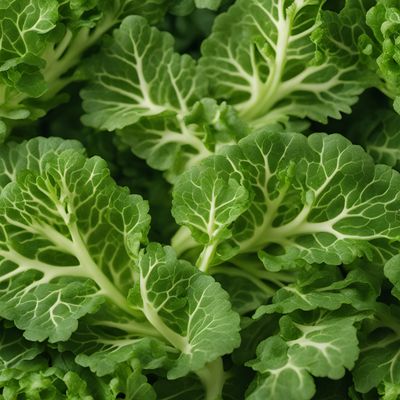
Baby leaf crops (including brassica species) and similar-
The Green Delights: Exploring Baby Leaf Crops

Grape leaves and similar species
Nature's Edible Wrappers: Exploring the Versatility of Grape Leaves

Escaroles and similar-
The Versatile Leafy Greens

Lamb's lettuces and similar-
The Delicate Greens: Lamb's Lettuces and Similar

Roman rocket and similar-
Peppery Greens
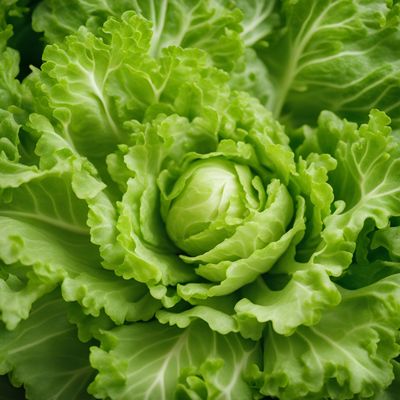
Lettuces and similar-
"The Verdant World of Leafy Greens"

Red mustard leaves and similar-
The Fiery Greens
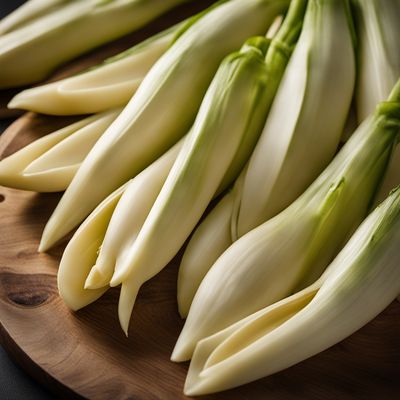
Witloofs and similar-
Bitter Elegance
Recipes using Leafy vegetables » Browse all

Horta with Lemon and Olive Oil Dressing
Zesty Greens: Horta with a Tangy Twist

Lowcountry Shrimp and Grits Salad
Southern Coastal Delight: Lowcountry Shrimp and Grits Salad

Romazava with a Twist
Malagasy Comfort: A Flavorful Romazava Recipe
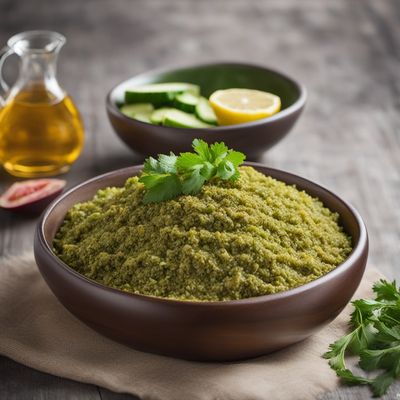
Fesikh with a Twist
Savor the Flavors of Egypt: A Modern Twist on Fesikh

Roasted Crispy Cochinillo with Garlic and Rosemary
Golden Delight: Crispy Spanish Cochinillo Infused with Aromatic Garlic and Rosemary

Cornish-style Three Sauce Fish
Cornish Coastal Delight: Three Sauce Fish Extravaganza

Zambian Peanut Stew with Leafy Greens
Savory Nutty Delight: Zambian Peanut Stew with Leafy Greens

Japanese-style Seafood Hot Pot
Umami Delight: Japanese Seafood Hot Pot

Tombik Döner with Yogurt Sauce
Savory Turkish Delight: Tombik Döner with Creamy Yogurt Sauce

Aragonese-style Cochinillo Asado (Roast Suckling Pig)
Crispy and Tender Roast Suckling Pig, Aragonese Delight

Bangladeshi-style Phaksha Paa
Spiced Pork with Leafy Greens: A Bangladeshi Delight

Lombard-style Pan Mee
Savory Lombard Noodles: A Taste of Malaysian Delight